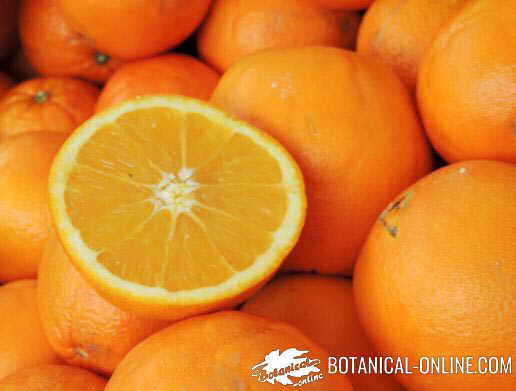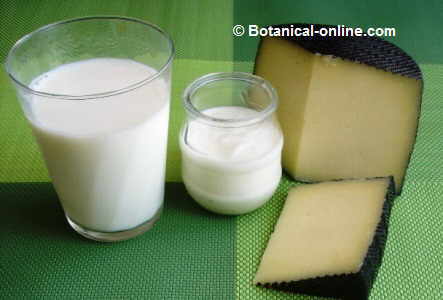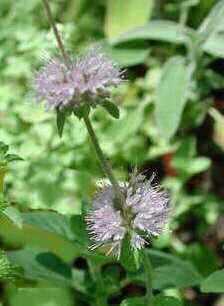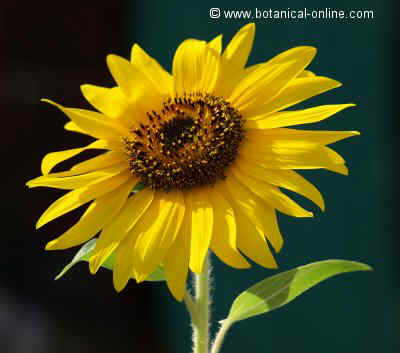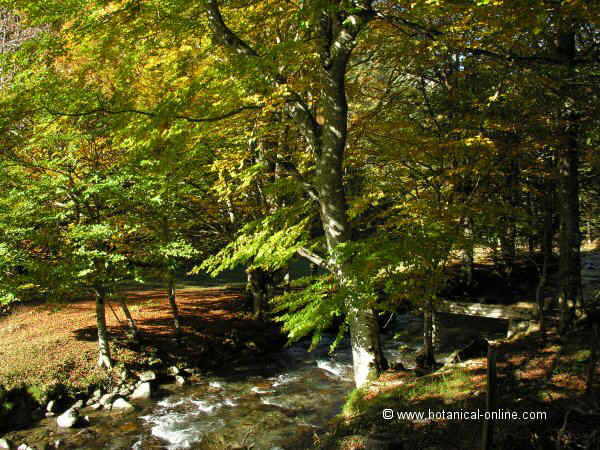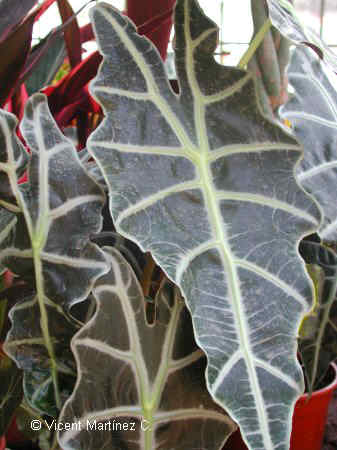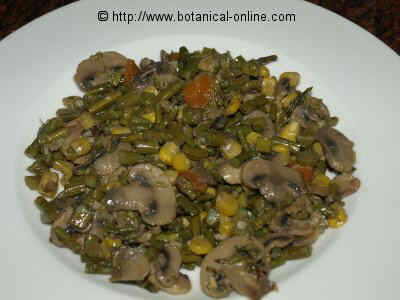Contents
- 1 Broccoli growing tips?
- 1.1 Types and varieties of broccoli
- 1.2 Broccoli characteristics
- 1.3 What are the differences between broccoli and cauliflower?
- 1.4 Broccoli irrigation
- 1.5 Broccoli – uses
- 1.6 Broccoli – exposure
- 1.7 Broccoli planting and reproduction
- 1.8 Broccoli – Type of soil: preparation and fertilization
- 1.9 Broccoli – Maintenance
- 1.10 Broccoli – Harvesting and preservation
- 1.11 When and how to collect broccoli?
- 1.12 Rotation and intercropping with broccoli or cabbages
- 1.13 How to preserve broccoli?
Broccoli growing tips?
Broccoli is probably one of the most consumed vegetables in the diet.
Eating it regularly, besides being delicious, has demonstrated many benefits in our health. For example, because of its glucosinolate content, it has anti-cancer properties.
Broccoli, like cabbage, can be grown throughout the year as there are varieties for each season.
Types and varieties of broccoli
Among the varieties of broccoli we should especially consider the Calabrian, also called Italian or American broccoli.
The Calabrian broccoli has a height smaller around the 45 cm and extend less (40 cm). Unlike common broccoli, it is a crop of fresh climates, so they should not be cultivated in places where temperatures exceed 15 ºC.
There are varieties for the decoration of flower beds, which often have different colors and small size. Broccoli is classified in different varieties according to their general appearance, the color of the floral heads or the date of production or planting.
* See: Types of Broccoli
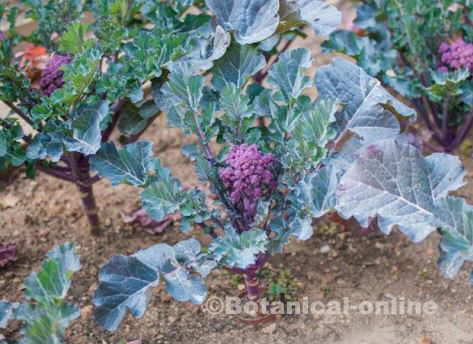
Broccoli or purple broccoli photo in a family vegetable garden
The main difference of broccoli and cauliflower is that broccoli flower heads are usually green, the stems of the inflorescences have a loose texture and the inflorescences more often acquire a conical shape. Cauliflower only forms a central inflorescence, while broccoli develops a central inflorescence surrounded by other ones.
Broccoli characteristics
Broccoli is a biennial plant from Brassicaceae family (Cruciferae). The name of the family alludes to its flowers with four petals in the shape of a cross. Other edible plants, like cabbage, Brussels sprouts or cauliflower also belong to this family.
From broccoli, like form cauliflower, we eat mostly the immature flowers and thick stems that precedes them.
Broccoli reaches between 60 and 90 cm high and 60 cm wide. The stem goes up from the roots and it is surrounded by the leaves.
The name “broccoli” comes from the Latin “brachium”, which means “branch” and refers to the branched form their flower heads
Broccoli flowers, when mature, are small, with four yellow petals. Fruits in siliqua with rounded pink seeds.
Broccoli leaves have petioles elongated limbs with leaves lobed gray-green, very wavy deep lobes.
What are the differences between broccoli and cauliflower?
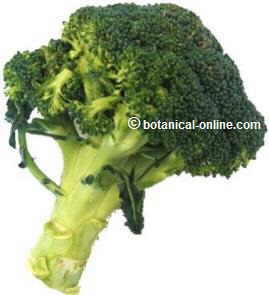
Glucosinolates are the anticancer components of broccoli
Broccoli differs fundamentally from cauliflower in which its flower heads are generally green. The stems of the inflorescences (pellets) have a less compact texture and the inflorescences often acquire a conical shape.
Cauliflower only forms a central inflorescence, whereas broccoli develops a central inflorescence surrounded by smaller ones.
The leaves of the broccoli have long petioles, limbs with lobulated grayish green leaves, very wavy and with deep lobes. Broccoli flowers, when they mature, are small, with four yellow petals. Fruits in siliqua with rounded seeds of pink color.
 Broccoli irrigation
Broccoli irrigation
The soil must always maintain a certain humidity. Broccoli needs a special watering after transplanting the seedlings and by the time they develop the green part of the plant.
Watering should be reduced at the time the flower heads have formed , before they mature. However, as mentioned, the soil will never be left to dry.
The best way to check the soil humidity is to see that it does not stay engaged with the tools, but it still retains some moisture when it is caught between the fingers.
 Broccoli – uses
Broccoli – uses
They are grown for the production of edible flower heads. (More information in the listing below)
 Broccoli – exposure
Broccoli – exposure
Broccoli is a temperate plant that needs to be protected from strong winds. The ideal growing temperature is between 20 and 24 º C, while for flower formation temperature should be between 10 and 15 º C.
Inflorescences during the growing season are affected by direct sun in hot weather and frost in cold climates. During the summer it requires moderate shade.
Similarly, when mature, it should be harvested soon as they can be affected by numerous factors (frost, wind, heat, etc) and rot easily or turn brown, making it impossible to sell.
In colder places. we will require the use of varieties suited to the low temperatures, that’s to say, those that are harvested in early spring or late winter, as Nine Star Perennial varieties, Extra Early Purple Sprouting Rudolph or White sprouting.
The use of varieties adapted to cold weather allows planting in extreme temperatures, as in the British Isles, where it is grown at temperatures up to -12 º C.
 Broccoli planting and reproduction
Broccoli planting and reproduction
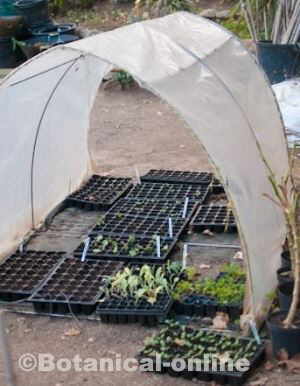
Picture of seedlings in an orchard
Broccoli are reproduced from seeds in a seedling bed. Seeds are drilled to a depth of 1 cm and transplanted after 7 weeks. Once seedlings start to grow, thinning should be done, leaving enough space for them to grow well.
Planting time depends on the variety chosen, but it takes place for most of the varieties between the months of May to June and they can be transplanted from July to August. The very early varieties are planted in winter and transplanted in spring. In either case it is convenient to do the transplantation when the seedlings have reached about a foot high.To transplant them, they should be introduced into the ridge at a distance of 60 cm between a plant and another, and at 80 cm or 1 meter from the opposite ridge.
Keep in mind that broccoli mature very slowly, requiring approximately one year from the time of planting to the harvest. This means that the soil where this plant grows will not be available for planting other vegetables during this time.
Calabrese varieties are best seeded directly on the ground than in the nursery to avoid damaging the roots during transplantation. Be sure to leave about 22 cm space between plants separated about 30 cm between ridges. Unlike broccoli, Calabrese are varieties that ripen very quickly. They are sown from spring or early summer and harvested after about 14 or 16 weeks.
 Broccoli – Type of soil: preparation and fertilization
Broccoli – Type of soil: preparation and fertilization
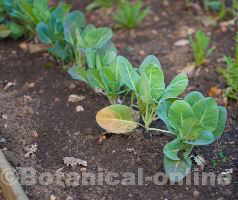
It is recommended to prepare the soil in advance with natural fertilizer to improve soil nutrients
Broccoli thrives in neutral or slightly acidic sites, rather than alkaline with a pH between 6 and 7.5. When planting in acidic acid, limestone should be added to the soil to reduce acidity. It does not like deep, sandy or saline soils or places where strong winds blow in winter.
They prefer well-worked soil, that has been hoed deep to 35 or 40 cm. During labor tasks, before planting, it may be desirable to add some manure or mature compost because it is a type of crop that needs nitrogen. In case of using 21% nitrogen fertilizer, it is estimated that either broccoli or Calabrese will need 45 to 55 g per square meter.
Besides nitrogen, broccoli usually needs potassium and boron. Magnesium may also be necessary for certain soils that are deficient in this mineral.
Although it prefers rich soils, broccoli is very useful for planting in poor soils where other vegetables or vegetables can not grow. In this case, the plot should be amended to make it productive.
 Broccoli – Maintenance
Broccoli – Maintenance
Among the major maintenance tasks, we should include superficial weeding to remove weeds, much greener and healthier than using herbicides.
It will be necessary a shallow dig to provide the necessary oxygen to the ground.
In drier areas, the use of dry matter can provide the necessary mulching to prevent moisture loss.
Broccoli – Harvesting and preservation
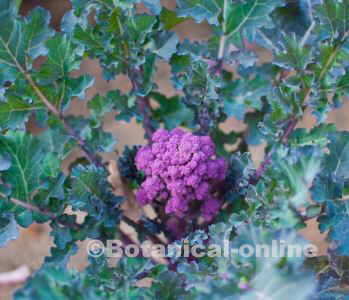
Immature growing broccoli that should grow more before harvesting
When and how to collect broccoli?
The central main flower head should be collected first, cutting the flowering stem to about 13 or 15 cm from the top of the head. This will be done when the shoots reach 15 to 20 cm in diameter, during the beginning or end of spring.
The heads should be firm, however we should not expect them to begin to open, which would indicate that they will begin producing flowers. In this case, they would not be so appropriate because this broccoli will break down more during cooking. If they are left to excessive maturation, the heads may become yellow.
When cutting the terminal bud, we stimulate the production of lateral heads. Thus, we can achieve a progressive performance of the plant for a couple of months.
Rotation and intercropping with broccoli or cabbages
According to crop rotation, it is recommended to plant the broccoli in places where there were previously solanaceae (potatoes, tomatoes, …) and the following year to grow legumes in that field. Do not grow cabbages on places where other crucifers have been planted in the past year to reduce the risk of pests and diseases.
Close to broccoli we can plant beets, peas, beans, tomatoes or eggplants (in summer), garlic or onions, these last four will also help prevent plants from becoming infected with insects that usually attack them (crop association).
Merging mint, sage, rosemary, tansy or other herbs is another way to help control pests with other plants.
How to preserve broccoli?
Broccoli can be kept very well by the freezing method.
Calabrian type must be collected when the main head reaches a diameter of about 7 to 10 cm. For subsequent lateral heads, we must wait to pick them up when they reach 10 cm in diameter. Calabrian type, like the rest of broccoli, is well preserved when frozen.
![]() More information on the properties of broccoli
More information on the properties of broccoli
Related information: Cultivation of thistles

 Broccoli irrigation
Broccoli irrigation